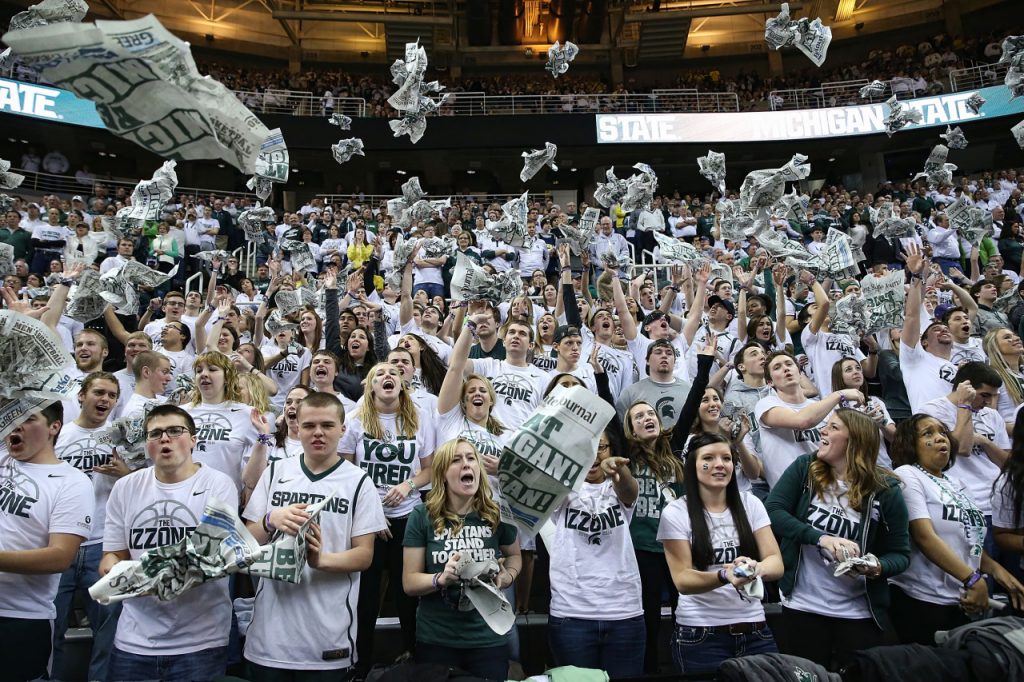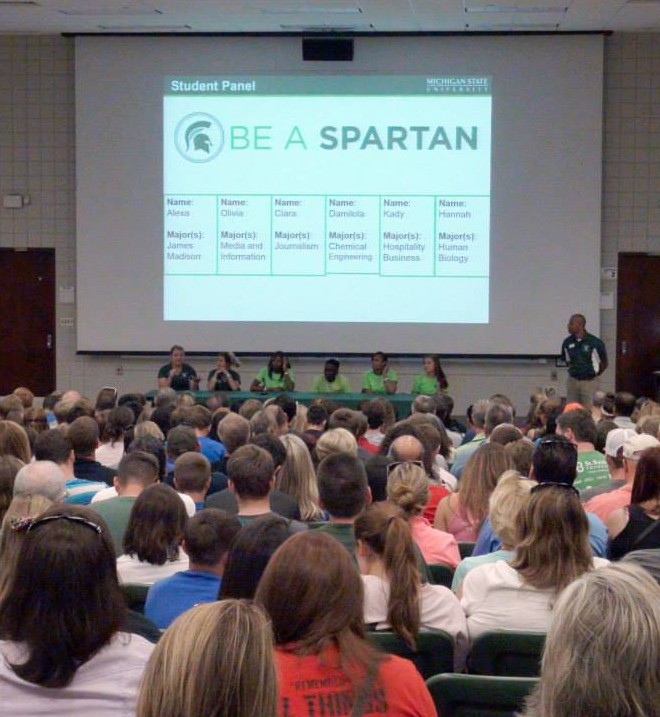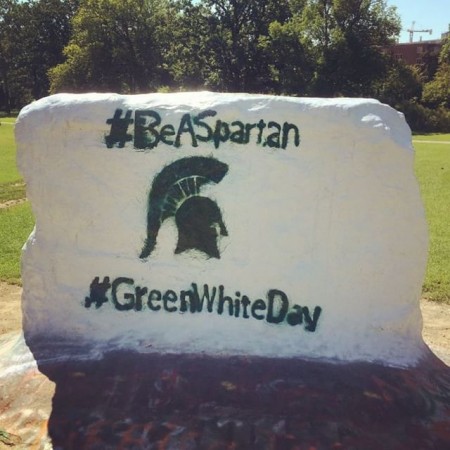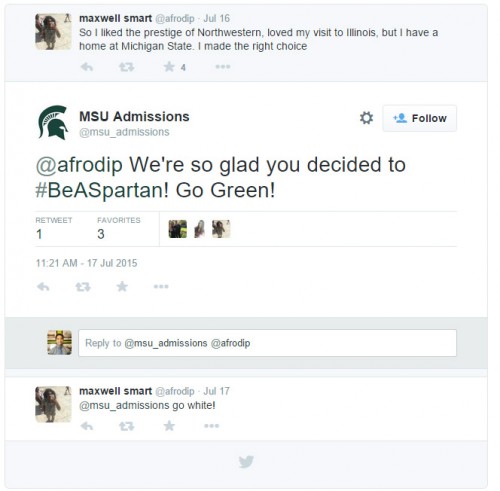Learning Hub | Social Media
Drive Brand Affinity with Social Media Engagement
August 4, 2015 | Jon Teodoro

The marketing concept of brand affinity probably won’t be the first thing to come to mind regarding college. Especially at Michigan State University, foggy weekend nights, roller coaster football victories, and caffeine-addled study marathons are among the experiences that alumni (author included) will warmly remember with pride for their alma mater (read: brand affinity).
For the undergraduate college admissions office that welcomed us into the Spartan ranks, however, its efforts to extend that same opportunity to undecided high school seniors are no longer as defined as they used to be; the channels of communication technology continue to shift. But with communications manager Julia Janssen at the helm of the MSU admissions office’s social media and digital campaigns, recruiting prospective freshmen and nurturing school spirit can be a matter of direct social media engagement.
“People aren’t coming to social platforms in the search phase of college,” Janssen said. “It’s really after they submit an application or they’ve been accepted and they’re trying to decide between colleges when they’ll start building a relationship with the school and really where social [media] is a big player in my mind.”
To draw undecided applicants further down the consideration stage and into its social media network, much of the recruitment material that Janssen’s office distributes prominently features hashtags including #BeASpartan and #Spartans2019.
“From the beginning, we’re trying to get students to connect with us as part of our effort to try and drive that community sense and make them feel like they’re important here,” Janssen said. As involved in social media as she is, Janssen is also well aware that she has to continually adapt to her audience.
“Our demographic is always going to stay the same,” she said. “I may be getting older every year but I keep on trying to recruit that 17 to 18-year-old so I always have to evolve and stay on top of what we think these students are using, what are they relating well with, where are they going for information, and what are they trusting.”
At least for now, 50 percent of high school students in a 2015 Chegg survey said social media conversation influences their decision on where to enroll. With the resources of MSU at her disposal, Janssen continues to thrive on continuing the conversation through social media’s major hubs, also adapting the content of her posts and replies to the personas that students specifically assume for each outlet:
- Facebook: “Facebook is a more formal channel where I post more announcements, reminders, or photo driven things.” Janssen also uses fewer hashtags than other outlets.
- Twitter: “Twitter is more free form conversation. We tend to get the most questions through Twitter. It’s informal in the sense that students are asking short form questions because they’re limited to 140 characters so they can’t get too detailed. It’s also a real nice tool for us because that’s where I can monitor certain keywords…not just hashtags.”
- Instagram: “We’re just trying to share a really organic student version of what campus is like. It doesn’t have to come from a specific area and it can be anything from the ice cream students are getting at the MSU Dairy Store to their experience at the football stadium to being over by the Red Cedar River studying for finals.”
While she can’t quantify the exact number of students that she successfully persuaded into enrolling at MSU, Janssen only needs to look over the digital trail of communication that she’s put into motion. Her favorite story involves a high school senior who once expressed worry over Twitter regarding her inability to decide on a college to attend. Janssen caught the tweet and replied with, “Well we say, Go Green! Be a Spartan.” The response that Janssen received from the senior in question was…well, according to Janssen, it went along the lines of, “OMG that’s a great school with all these green hearts and everything.”
Without a spectacular athletic program, a warm student community, and an enormous digital presence to boot, a business won’t have the same brand affinity as a major national university. But at the end of the day, interacting with potential buyers through means that connect people throughout the world is a pretty solid start.



